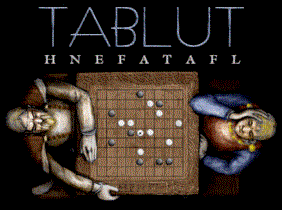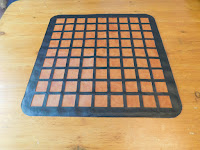Tablut is a 9 x 9 version of hnefatafl, known from the Sami regions of northern Europe. It was played there until at least the 18th century, and was described in detail by Linnaeus in 1732. His description provided the key to understanding how hnefatafl, as repeatedly mentioned in especially the Icelandic sagas, was actually played.
When I first became interested in hnefatafl games many years ago, I got myself a Tablut-playing software programme. I still have it; it's on a 3.5" diskette, clearly showing its age ...

While deciding what materials to use for a physical Tablut board and pieces, I remembered I still had part of a pig leg somewhere, an old museum piece 'surplus to demand', which I once decided to save from the skip.
Bone is a material that was often used for hnefatafl pieces, so what better material to use for my tablut set? The leg was large enough to make 25 pieces (one king, eight defenders, 16 attackers), so that worked out nicely. The knuckles would turn into king plus defenders, while sections of the long bone would be the attackers. Originally I intended to stain the attackers, but as they're so different in shape, it's very clear which side the pieces are on, so I decided to keep them in their natural 'bone' colour.

On to the board, and I still had some (fake) leather from when I made a board for
Klin Zha. Leather board would go well with bone pieces, wouldn't it? Plan was to have two layers of leather: a black grid on top of a brown base.

The board was then finished by inserting beige leather squares in the key squares of the grid: the starting square for the king, and the four escape squares in the corners of the board.
Final step: put the bone pieces on the board!
I think the bone-leather combination works pretty well. And I also think my decision not to stain one of the two sides was a good one in the end; the two sides are clearly different from each other, and their natural colour works well on the darker leather board.























































